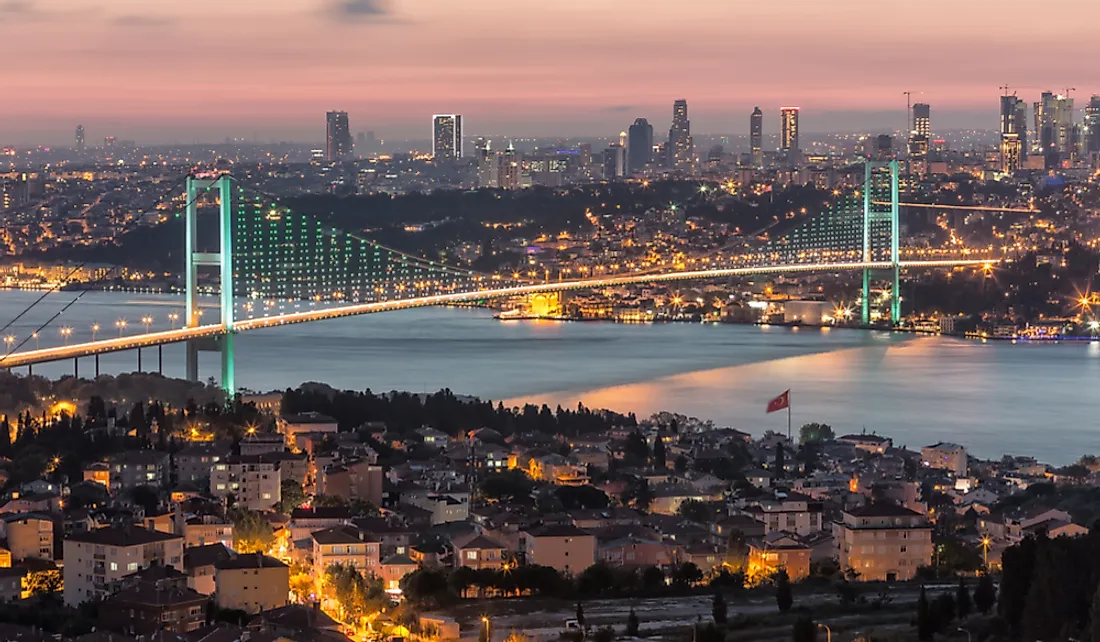Is Istanbul in Asia or Europe?

Istanbul is Turkey’s largest city with an area of about 2,063 square miles. Previously, the city was known as Byzantium as well as Constantinople. From a geographical perspective, the city does not belong to one continent since it lies in both Europe and Asia. A third of the population of Istanbul lives on the Asian side while the economic center (which includes things like banks and corporations) is on the European side.
Geography of Istanbul
The European side consists of places such as Sultanahmed, Taksim, Sariyer, and Eyup. The Asian or the Anatolian part includes places like Kadikoy, Bostanci, and others. The Bosphorus Strait separates the European from the Asian side, which has a length of about 19 miles. The separating strait acts as a connection between the Sea of Marmara and the Black Sea. The strait separating the two continents is bridged by two suspension bridges namely the Fatih Sultan Mehmet Bridge (or the Bosporus Bridge II) and the Bosporus Bridge.
Administration
Officially, the city of Istanbul is the capital city of the Istanbul Province, which means that its administration falls under the Istanbul Metropolitan Municipality (MMI). Under the MMI, there is a smaller body known as the Municipal Council tasked with the main decisions of the city. The council makes a number of decisions including management of the city budget, the maintenance of the rich cultural aspect of the city, and other functions. In addition, the city has a powerful mayor who has the power to make powerful decisions without consulting.
Economy
In 2011, the city had a gross domestic product (GDP) adjusted for purchasing power parity (PPP) of $301.1 billion. About 27% of Turkey’s GDP is accounted for by Istanbul while almost a quarter (about 20%) of the nation’s labor force lives in the city. The economy is diverse with most of the revenue coming from the manufacturing sector, which produces things like tobacco and electronics. Another crucial sector is tourism with the city receiving about 12.56 million visitors in 2015. People visit to see the historical side of the city, which is persevered in the seventy museums and other sites.
Demographics
According to the Turkish Statistical Institute, the Istanbul Metropolitan Municipality has a population of about 14,377,019 people, which represents about 19% of Turkey’s population. The population growth rate is also quite high at 3.45% every year. Some of the European side with denser populations include the west, northwest, and the southwestern region of the city center. On the Asian side, Üsküdar district is the most densely populated.
Despite being a cosmopolitan city in historical times, Istanbul is now predominantly dominated by Muslims ever since the Ottoman Empire ended. Most of the Muslims belong to the Sunni sect followed by another sect known as the Alevis. After Turkey was established as a republic, some of the mystic sects such as Sufism were banned although they still have a substantial number of followers. Christianity also exists with the city being the seat of the Ecumenical Patriarchate as well as other churches like the Armenian Patriarchate. As of 2000, active mosques in the city numbered around 2691 while active churches and synagogues were 123 and 20 respectively.











